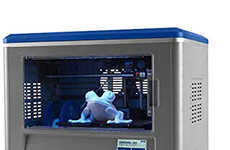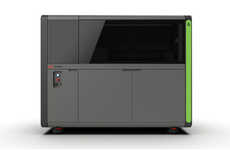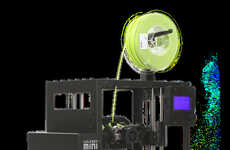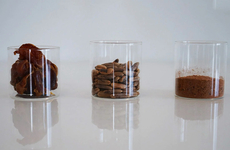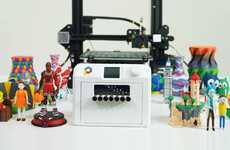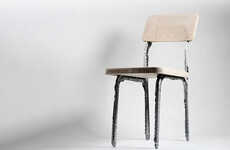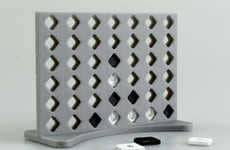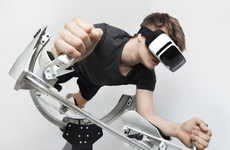
MakerBot Introduces New Printing Composites for Iron, Wood & Stone
Laura McQuarrie — January 15, 2015 — Tech
References: store.makerbot & psfk
At CES 2015, MakerBot unveiled some impressive new 3D printing material composites that are intended to help designs look more realistic. The PLA-based filaments include real composites of materials like stone, metal and wood, so that the prints are able to look, feel and function the same way these natural materials do. Among the new composites offered are limestone, maplewood, bronze and iron. When printing with a metal filament for example, these new offerings from MakerBot mean that an object will be inherently magnetic, or with wood, an object can even be sand and drilled after it is printed.
These filamants are optimized for the Smart Extruder, now used in MakerBot's 5th-gen printers. Although still in development, it's expected that these materials will be ready to ship later on this year.
These filamants are optimized for the Smart Extruder, now used in MakerBot's 5th-gen printers. Although still in development, it's expected that these materials will be ready to ship later on this year.
Trend Themes
1. Natural Composites - The trend towards using natural materials as composites in 3D printing offers opportunities for innovation in sustainable and eco-friendly manufacturing.
2. Realistic 3D Printing - There is a trend towards using 3D printing to create objects that look, feel, and function like their real-world counterparts, paving the way for advancements in product prototyping and development.
3. Functionality and Interaction - The ability to print an object that is capable of functioning the same way that a natural material does offers opportunities for innovation in a wide range of industries, including construction and product manufacturing.
Industry Implications
1. Construction - The natural composites offered by MakerBot could have big implications for the construction industry, offering new opportunities for sustainable building materials.
2. Product Design and Manufacturing - The new printing composites could provide benefits for product designers, enabling them to create prototypes that look and function like the real thing, reducing development time and costs.
3. Art and Design - The realistic 3D printing trend could have a big impact on the world of art and design, offering new ways to create sculptures, furniture, and other objects with a more natural look and feel.
6
Score
Popularity
Activity
Freshness

